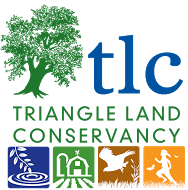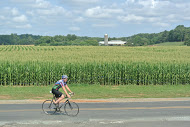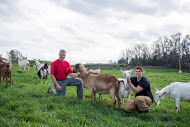 Special to the Philanthropy Journal
Special to the Philanthropy Journal
By Diana Hackenburg
Food Security in the US
We often hear about national security and social security, but how frequently do we think about food security? Food security means having enough food for an active, healthy life. In 2014, 14 percent of American households or 17.1 million households were food insecure at some point during the year. The situation is even worse in North Carolina where 16.7 percent of households and 26.1 percent of children under the age of 18 are food insecure on a regular basis.1
People experiencing food insecurity feel tremendous stress from the pressure to find food. This stress, added to the lack of healthy food, can lead to depression, anger, diabetes, high blood pressure, and even, paradoxically, obesity. Children experiencing hunger are especially vulnerable as nutritious food is critical to physical and emotional development.
Widespread hunger costs our nation at least $167.5 billion annually due to economic factors including lost productivity, health care expenses, and poor educational outcomes and associated spending.2 Some argue, at such a high price, it costs our nation more to ignore hunger than it would to end it.3
Food security is a combination of availability, access, and use. Enough food exists right now to feed everyone in the US adequately; the main issue is distribution. How do we increase the availability of fresh, healthy foods to families with limited resources, including time, transportation, and money? Many communities have found a winning strategy in supporting local farms.
While many people associate food production with large-scale agriculture, farms of 50 acres or less still represent 48 percent of all farms in North Carolina. Agriculture on the whole though is big business, contributing $78 billion annually to the state’s economy. Nevertheless, North Carolina still lost 2,703 farms and 62,560 acres of farmland between 2007 and 2012, sixty percent coming from those small family farms.4
Farming is a business, and like all good executives, farmers are looking for new ways to succeed in a changing economy. Diversifying crops, going organic, creating value-added products, and reaching out to new markets allow farmers to spread the risk over multiple enterprises, but generally require capital up front. Historically, families relied on debt financing (loans) or they self-financed using their own equity or outside income to make these changes. Conservation easements present another option that can give farmers an economic boost while also protecting the land so crucial to their work.
Conservation easements are voluntary legal agreements that allow landowners to continue to own and farm the land while permanently restricting development. Each easement is individually crafted to meet the conservation objectives and needs of the landowner. On a farm, this may mean reserving new homesites, permitting new agricultural buildings, and requiring best management practices to protect soil and water quality. Landowners can pass the land along to heirs or sell the property, but the easement remains in effect on the land in perpetuity.
Conservation easements may be sold, but most often they are donated. Farmers donating an easement may qualify for significant tax benefits and property tax savings. Lowering the market value can also make it easier to pass working lands on to the next generation, an important strategy for keeping the land in farming.
While many different organizations and agencies hold easements, many families choose to conserve their land with a local land trust. Together, North Carolina’s 24 land trusts have forever protected more than 400,000 acres of forests, lakes, and farms.5 Examples of farms in the Triangle protected through easements with Triangle Land Conservancy, a Durham-based land trust, include Lindale and Lindley Farms in Chatham County, Maple View Farm in Orange County, and Green Button Farm in Durham County.
Local Farms, Local Food
If you live in the Triangle, many of these farms may sound familiar. From  breakfast to dessert, you can fill your plate with their delicious cheeses, milk, ice cream, produce, and meats. Their products are sold to larger co-ops, grocery stores, and local businesses, and directly to consumers through storefronts as well as farmers’ markets and CSAs, many of which have programs directed at increasing the entire community’s access to fresh local foods.
breakfast to dessert, you can fill your plate with their delicious cheeses, milk, ice cream, produce, and meats. Their products are sold to larger co-ops, grocery stores, and local businesses, and directly to consumers through storefronts as well as farmers’ markets and CSAs, many of which have programs directed at increasing the entire community’s access to fresh local foods.
At the South Durham Farmers’ Market, shoppers can use their benefits through the Supplemental Nutrition Assistance Program (SNAP) to buy high-quality food such as pasture-raised poultry, pork, and beef from Green Button Farm. The Double Bucks program further extends their buying power by matching up to $10 for each customer using their SNAP benefits. Shopping at the market can also empower families by getting the kids involved in their food choices and providing new inspiration for food preparation at home.
In return for an upfront fee, members of a CSA (Community Supported Agriculture) program receive a weekly selection of farm-fresh products. Farmers benefit from a steady income stream and the community gets increased access to fresh food, often at more affordable price point than in conventional stores. Recognizing potential barriers for participants, some CSAs offer low-income families subsidized or free shares. CSAs and small farms in general often donate leftovers to hunger assistance programs, further increasing overall access to fresh food.
Bringing It All Together
By supporting local farms, communities can increase both the food and economic security of their citizens. Specific programs linking farms with families in need create a positive feedback loop: improved food access generates economic activity that strengthens local businesses, providing increased opportunities for participation in the regional food system.
And even though it’s a “system,” changes can be made by individuals taking small steps in their community. For example, if everyone in North Carolina spent just 10 percent of their food budget on local foods, $3.5 billion would be available to the local economy, including farms.6 Farms can be further supported by donating to or joining a local land trust with an agricultural easement program. Individuals can also advocate for local farm and food friendly policies by joining their area’s food policy council.
References
- Coleman-Jensen, A., Rabbitt, M., Gregory, C., & Singh, A. 2015. Household Food Security in the United States in 2014. USDA ERS: http://www.ers.usda.gov/publications/err-economic-research-report/err194.aspx
- Jyoti, D., Frongillo, E., & Jones, S. 2005. Food Insecurity Affects School Children’s Academic Performance, Weight Gain, and Social Skills. The Journal of Nutrition: 135.
- Brown, J., Shepard, D., Martin, T., and Orwat, J. 2007. The Economic Cost of Domestic Hunger. The Sodexo Foundation: http://www.sodexofoundation.org/hunger_us/newsroom/studies/hungerstudies/costofhunger.asp.
- 2012. 2012 Census Volume 1, Chapter 1: State Level Data – North Carolina. http://www.agcensus.usda.gov/
- Conservation Trust for North Carolina. 2015. 2015 North Carolina Land Trust Directory. http://www.ncadfp.org/documents/2015LandDirectoryFinal.pdf
- Curtis, J., et. al. April 2010. From Farm to Fork: A Guide to Building North Carolina’s Sustainable Local Food Economy, a Center for Environmental Farming Systems report, Raleigh, N.C. http://www.cefs.ncsu.edu/resources/stateactionguide2010.pdf
Triangle Land Conservancy (TLC) strives to create a healthier and more vibrant Triangle region by safeguarding clean water, protecting natural habitats, supporting local farms and food, and connecting people with nature through land protection and stewardship, catalyzing community action, and collaboration. Since 1983, TLC has conserved over 17,000 acres of wild and working lands in North Carolina’s Triangle region. Diana Hackenburg is Communications Manager for Triangle Land Conservancy. Her passion is inspiring others to explore and care for the natural world around them.





